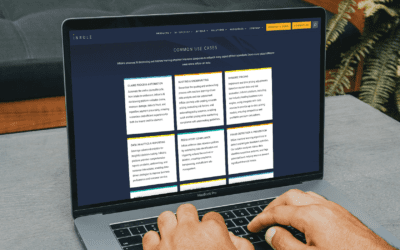What Is Decision Intelligence and Why It’s Reshaping Enterprise Strategy
In today’s hyper-competitive environment, organizations must make smarter, faster decisions to stay ahead. Decision Intelligence (DI) unifies data,...
How Intelligent Decisioning Transforms Business Performance
Intelligent decisioning is no longer a bolt-on innovation, it has become the engine of enterprise transformation. By combining advanced analytics,...
The Build vs. Buy Dilemma for Decision Automation Software
Decision automation software is essential business infrastructure. As organizations scale and data becomes central to every process, the need for...
The Future of AI Automated Decision Making: 2025 Trends to Watch
AI is fundamentally reshaping how decisions are made across the enterprise. From fraud detection to supply chain management, organizations are...
Combining Low-Code and No-Code: How InRule’s Rules Engine Connects Business and IT Teams
In today’s digital-first environment, organizations must deliver exceptional customer experiences, adapt swiftly to change, and empower teams to...
How a Business Rules Engine Enables Agility and Compliance While Scaling Smart Decisions
In today’s fast-moving, compliance-driven business environment, organizations must make decisions swiftly and precisely at scale. Many of these...
5 Use Cases for Decision Intelligence in Financial Services
In this three-part blog series, we’ll explore the performance impact and key benefits of Decision Intelligence as well as the most common use cases...
How AI Decisioning Platforms Enable Insurance Compliance
Compliance is Complicated Insurance companies operate in a complex and highly regulated environment that is constantly evolving. The volume of...
The Advantages of AI Decisioning in Insurance Fraud Detection
In the first installment of our series, AI Decisioning’s Triple Advantage for Insurers, we explored how AI decisioning is transforming operational...
AI Decisioning’s Triple Advantage for Insurance
In this three-part blog series, we'll explore three key areas where AI decisioning delivers the most significant return on investment and business...
How Automated Underwriting is Shaping Modern Insurance
The insurance industry has been known for tedious, manual underwriting processes. However, with the rise of digital technology, the underwriting...
The Power of Decision Intelligence: Integrating Machine Learning, Business Rules, and Process Automation
Decision Intelligence is emerging as a transformative tool, combining machine learning, business rules engines, and process automation to...
InRule: Top 150 Insuretech for Claims & Fraud Management
InRule was recently named one of the leaders in the claims and fraud management category when CNBC audited the insurtech landscape with Statista....
Risk Mitigation and Ethical Decision-Making
Risk mitigation is critical for any business aiming to navigate the unpredictable waters of the modern economy. It involves identifying, analyzing,...
What are the Driving Forces to Automate the Business?
With rapid technological advancements and increasing competitive pressures, automation emerges as a vital strategy for organizations striving for...
10 Ways AI Decisioning Builds Customer Loyalty
Decision automation has revolutionized the way businesses operate, allowing for increased efficiency, accuracy, and scalability. But automation...
What AI Decisioning Offers: Enterprise Architects
As the people responsible for making their organization’s IT systems go and keeping them going, enterprise architects (EAs) must contend with...
Common Questions Answered: Decision Automation
Commonly asked questions about automated decisioning
When to Automate Decisions: Key Tipping Points in Favor of Leveraging Decision Automation
As more and more organizations enjoy the many advantages of AI-powered decisioning, the question of when to join them becomes increasingly pressing....
Escaping the Draw of the Familiar: Getting Out of Excel for Automation
New InRule customers often rely on Excel spreadsheets to manage their decision logic and processes. While this approach works up to a certain point,...
Change Happens: How AI Decisioning Is Transforming Insurance
More and more specialty and P&C insurers are discovering the many benefits of enhanced AI decisioning. Among all service industries, insurance...
InsureTech Connect Vegas 2023, The Future of Insurance
InRule came in full force to the InsureTech Connect Vegas 2023 conference, a worldwide gathering of the insurance industry’s best and brightest. The...
Top Event Takeaways: 2023 ISM + PHSA Education Conference & Expo
InRule was on hand for the 2023 ISM + PHSA Education Conference & Expo. Held from September 10 through 13 in Kissimmee, FL, the gathering,...
Total Economic Impact of InRule by Forrester
Cost Savings and Business Benefits Enabled by InRule InRule engaged with Forrester Consulting in a commissioned study to discover the true value of...
Discover the InRule Difference


















